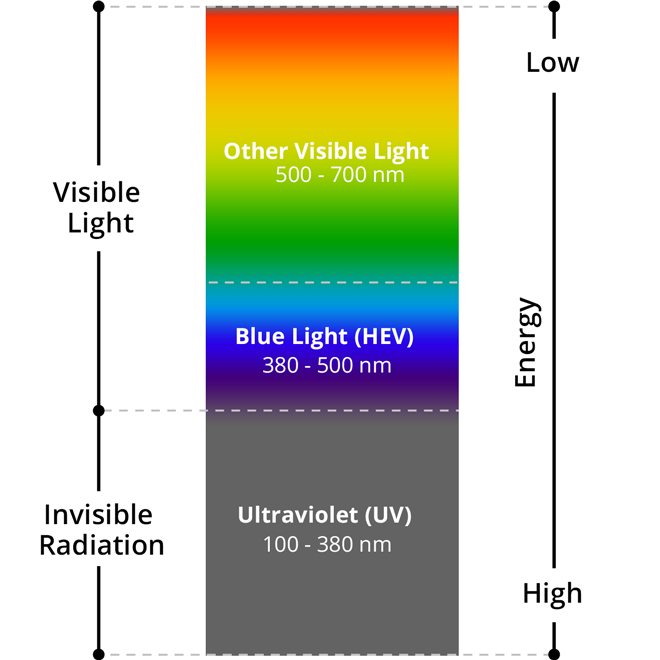Why Blue Light Is So Bad: The Science — And Some Solutions
Why Blue Light Is So Bad: The Science — And Some Solutions
“Why the Color of Technology Must Change” touched on the health issues caused by the pervasive use of blue light and blue screens in our technology devices. After Fastco Design featured my essay, I got in touch with Bill James of Healthe, a Minnesotan company that’s integrating blue-filtering technology into the everyday products we use. Our conversation delved into the problems associated with prolonged exposure, the industry’s efforts to address it — and some steps we all can take, to minimize these health issues.
How Light Affects the Body

Understanding the physics of light and how it interacts with the human eye is the first step to understanding why too much of it can be bad for us.
All light is waves, and different colors have different energies. Towards the beginning of the visible spectrum is red light, made up of low energy waves. This light is easier on our eyes, especially at night. As we get closer to the higher energy side of the spectrum, light becomes more tiresome for our eyes to process. Blue light occupies the highest energy portion of the visible spectrum. It penetrates all the way to the retina in the back of the eye.
Anything above 380 nanometers is not visible to the human eye and cannot be seen. While invisible, these frequencies can still be useful. Some epoxies used in dental work use ultraviolet light to accelerate the chemical process of fixing teeth. Tanning beds use these frequencies to artificially increase tan color (though of course you wouldn’t want to be bathed in it for hours, or you could develop significant health problems).
High energy light is crucial to everyday life. We get high energy visible light from the sun, and it helps us regulate our....................READ MORE

Comments
0 Comments